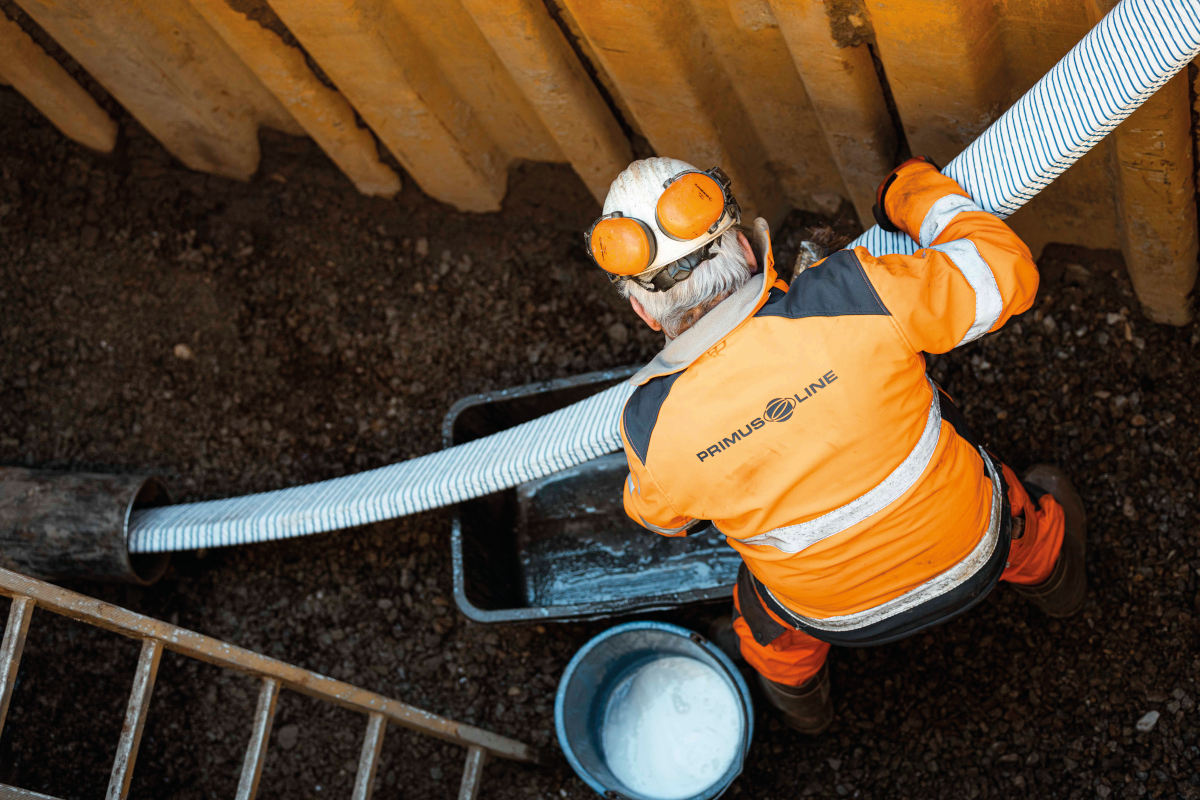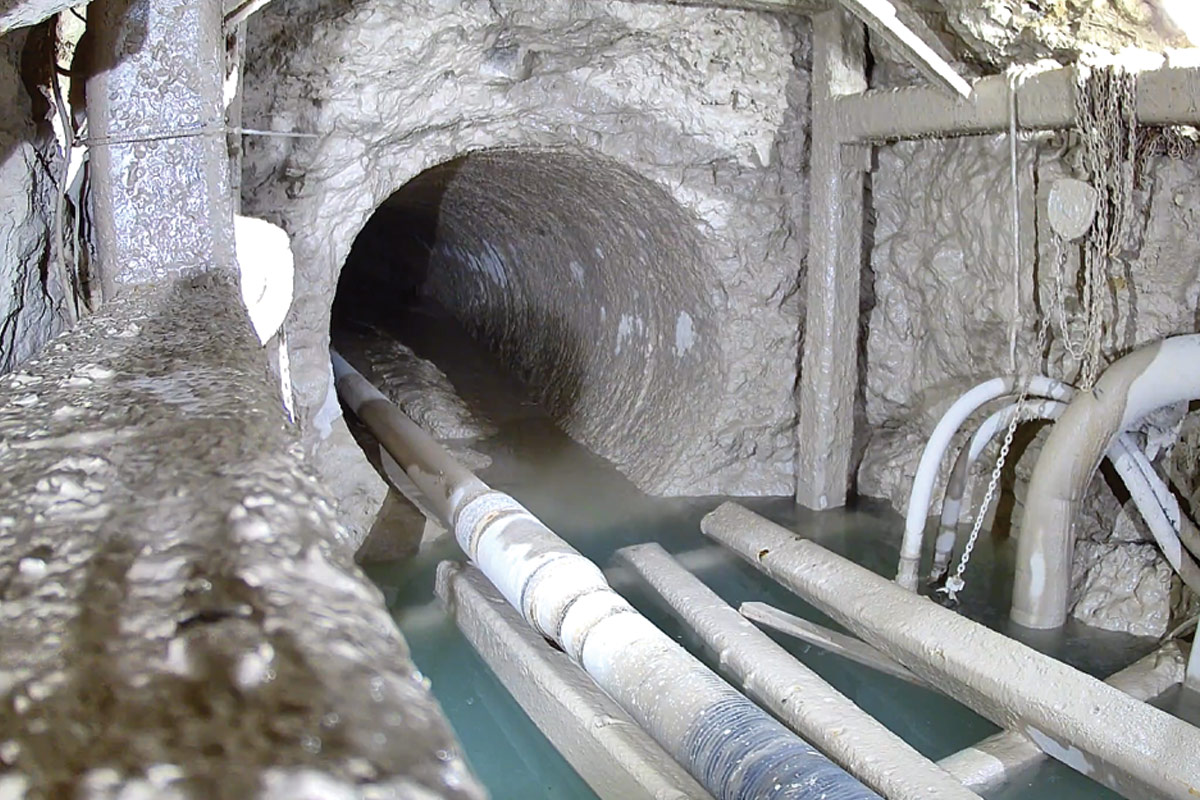
King County, Washington, Completes Challenging Sewer Bypass and Rehab of Eastside Interceptor
King County’s Eastside Interceptor (ESI) collects the majority of wastewater flows from the Puget Sound Area Cities of Kirkland, Bellevue, Mercer Island, Sammamish, Issaquah, Newcastle and Renton, and conveys it to the County’s South Treatment Plant. This aging reinforced concrete pipe (RCP) interceptor was constructed over 50 years ago and corrosion caused by hydrogen sulfide (H2S) gas has begun to take its toll on the pipe’s interior.
RELATED: Jacking Pipe Helps to Upgrade the Sewers in Las Vegas
Sections of the pipe are experiencing mild to severe corrosion that causes the concrete interior to crumble, exposing rebar and affecting the structural integrity of the pipe. The County has developed a proactive approach to deal with the degradation of the pipe by identifying sections of pipe experiencing corrosion, prioritizing rehabilitation needs based on severity, and developing projects to carry out the rehabilitations to keep the line in service.
The Eastside Interceptor Section 2 (ESI2) Rehabilitation Phase II Project was developed to rehabilitate approximately 3,700 ft of a severely corroded 96-in. diameter section of the ESI interceptor line located in Renton. The project is funded through King County Wastewater Treatment Division’s Capital Improvement Program which uses proceeds from revenue bond sales, short-term borrowing, and capacity charge revenues from surrounding cities. This section of pipe runs through an urban area between Boeing’s 737 commercial airline facility and the Renton Landing, a busy mixed-use development.
Beginning in 2016, King County performed an alternatives analysis that looked at various rehabilitation options for the Project including cured-in-place pipe (CIPP), spiral wound PVC liner and Linabond. Linabond was selected as the most appropriate rehabilitation method for this section of pipe as it maintained the greatest existing capacity. Carollo Engineers, Inc. was contracted by the County in the summer of 2018 to complete the preliminary design effort and prepare the design in the hopes of constructing the project in the 2019 dry season. This required a fast-track approach to design, permitting, and easement acquisition.
Flow Analysis, Bypass Pumping Study, and Construction Footprint
The first step in the project design process was to determine the required bypass system capacity. The goal was to provide an optimized, cost effective design capacity that covers the majority of recorded flows within the pipe. A previous study conducted by the County called for a bypass system capacity of 70 million-gallons-per-day (mgd).
Carollo utilized two-years of flow monitoring data that was collected at the project site to conduct its own design capacity determination. Frequency curves were developed to assist in establishing the bypass pumping flow rate, and associated probability of exceedance during the wet weather and dry weather seasons. The adjacent frequency curve illustrates that the maximum recorded dry weather flow of approximately 57 mgd was well below the previously proposed bypass flow of 70 mgd. Ninety-six percent of the time, flow was below approximately 40 mgd (flow exceeded 40 mgd approximately 4 percent of the time). A design bypass capacity of 45 mgd was therefore selected, providing a 5 mgd factor of safety for the system.
The results of the flow analysis were then used to determine the various pumping requirements to be specified in the contract documents. Based on the flow analysis, the Contractor would be required to pump a minimum of 10 mgd and a maximum of 45 mgd for 24 hours a day, seven days a week. Because there was a possibility of higher flows, an emergency pipe evacuation plan and a means for allowing emergency flow release would need to be provided, as well as two standby pumps for mechanical redundancy. Due to the bypass suction pits location near residential properties, the Contractor was required to use electric driven bypass pumps and have standby noise attenuation to meet local noise ordinances.
These preliminary design requirements were used to move forward with the final design of the project. It was determined early on that the design of the bypass system would be left to the selected contractor. However, some preliminary design and sizing of the system components were required to ensure all project elements requiring a long lead time would be in order and available prior to bid. The culmination of this preliminary design work was summarized in a Basis of Design Report that addressed the bypass intake pit design, the bypass pipe routing and discharge, and the work and staging areas along the alignment.
RELATED: King County, Wash., Takes on Challenging Project to Control CSOs
Bypass Intake Pit Design & Emergency Flow Release
The bypass system’s intake pit was located on an open piece of Boeing property through which the ESI2 pipe runs. To access the pipe, an approximately 65-ft long x 20-ft wide x 10-ft deep excavation was dug to just below the crest of the pipe. This excavation faced some challenges as it was located in high groundwater and directly adjacent to a railroad spur track that transported Boeing 737 fuselages to the Boeing Renton plant. The existing pipe was also supported on piles due to poor soil conditions. To address these issues, the soils surrounding the pipe and excavation were chemically grouted to provide additional support for the pipe and aid in preventing groundwater leakage into the excavation. Steel sheet piles were hydraulically pressed-in to limit vibrations that could affect the adjacent railroad spur and pipe during the installation process.
A total of eight 12-in. x 12-in. skid mounted pumps were required to meet the 45 mgd bypass capacity, bringing the total pumps installed to 10 including the two redundant pumps. After excavating down to the pipe, five 3-ft x 1-ft, 8-in. coupons were cut from the top of the pipe for insertion of the 10 12-in. diameter bypass pump suction lines. An additional 8-ft x 5-ft coupon was removed for the installation of a custom designed temporary bulkhead. The steel bulkhead consisted of two semicircular plates with guide rails anchored into the existing pipe, and two gate sections that slid down the center of the pipe along the guide rails. These gates were fitted with lifting hooks that allowed for their removal in an emergency situation.
Brian Sliger, P.E. is a lead engineer and Erik Waligorski, P.E., is a principal infrastructure engineer with Carollo Engineers. Matoya Darby and Bob Isaac are project managers with the King County Wastewater Treatment Division.




